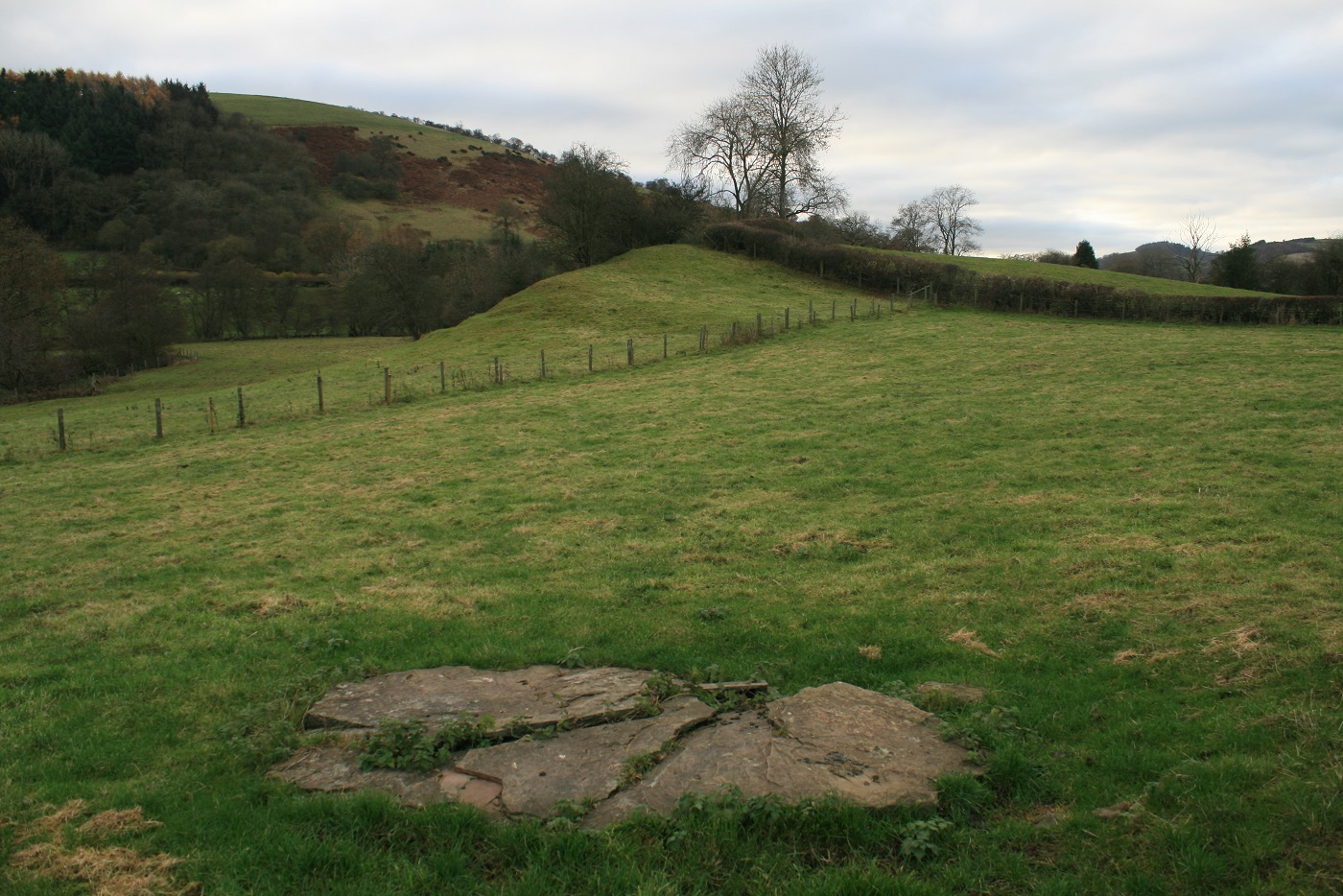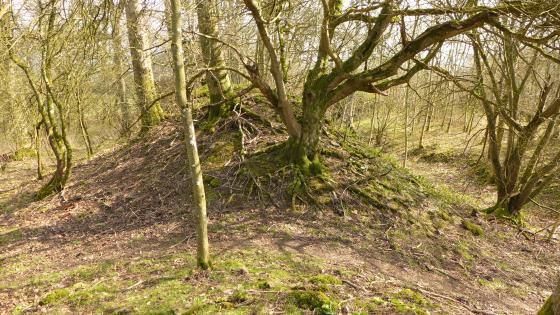



Looking towards the road, river behind camera.

The ploughed-down barrow at SO 28369 82022, just about visible with a determined eye. Looking ESE towards Clun. Although the barrow itself is barely there, the setting is decent and another example of Bronze Age sites next to watercourses.

The location of the ploughed-down bowl barrow at SO 28369 82022, looking WNW along the Clun valley.



3rd February 2003
We had quite a time trying to find this stone, mainly because we were looking for a “Standing” Stone – and this is a very “Horizontal” Stone, the snow on the ground and blowing in to our faces didn’t help either and stopped us taking photos.
The stone lays in a meadow close to the River Clun (it’s quite close to the road but there is no public access). It is about 3Metres long and 1.5 – 2 Metres wide (difficult to tell the other dimension as most of the it is below ground) sadly it is broken in to a number of peices, it’s still impressive though – very large for this area.
Three fields away to the southeast at SO 28369 82022, on the same side of the river, the Shropshire SMR lists a bowl barrow:
The monument includes a bowl barrow situated on a low rise north of the River Clun. Although much reduced by past ploughing, it survives as a low mound 25m north to south by 20m transversely standing up to 0.3m high. Although no longer visible as a surface feature, a ditch, from which the material was quarried for the construction of the barrow, surrounds the mound and has an estimated width of 2m.
At a distance of somewhat more than a mile from Clun, in a field to the right, near the hamlet of Whitcott Keysett, stands one of those extraordinary stones which are usually classed under the title of Druldical monuments. It is a flat, broad stone, of very irregular shape, placed upright in the ground, in which it is evidently inserted to a considerable depth. Above ground it measures eight feet three inches in height by seven feet broad.
From ‘Wanderings of an Antiquary’ by Thomas Wright, 1854. (It’s curious that I added this site to the database myself, a million years ago – it must have a bit of folklore to go with it?).

























































